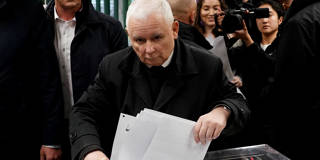In the space of just a few weeks, Poland’s Jarosław Kaczyński of the ruling Law and Justice party has witnessed his authority crumble and slip through his fingers like grains of sand. He witnessed it not only in parliament, but also at a memorial and at a polling station.
WARSAW – Consider the following three-scene play. In the first scene, it is October 10, 2023. Jarosław Kaczyński, the soon-to-be-deposed little “Big Man” of Poland’s populist ruling party, Law and Justice (PiS), does what he does on the tenth day of every month. He lays flowers at the monument commemorating his twin brother, then-President Lech Kaczyński, and 95 others who died when their plane tried to land in thick fog at Smolensk airfield in Russia, in April 2010.

WARSAW – Consider the following three-scene play. In the first scene, it is October 10, 2023. Jarosław Kaczyński, the soon-to-be-deposed little “Big Man” of Poland’s populist ruling party, Law and Justice (PiS), does what he does on the tenth day of every month. He lays flowers at the monument commemorating his twin brother, then-President Lech Kaczyński, and 95 others who died when their plane tried to land in thick fog at Smolensk airfield in Russia, in April 2010.